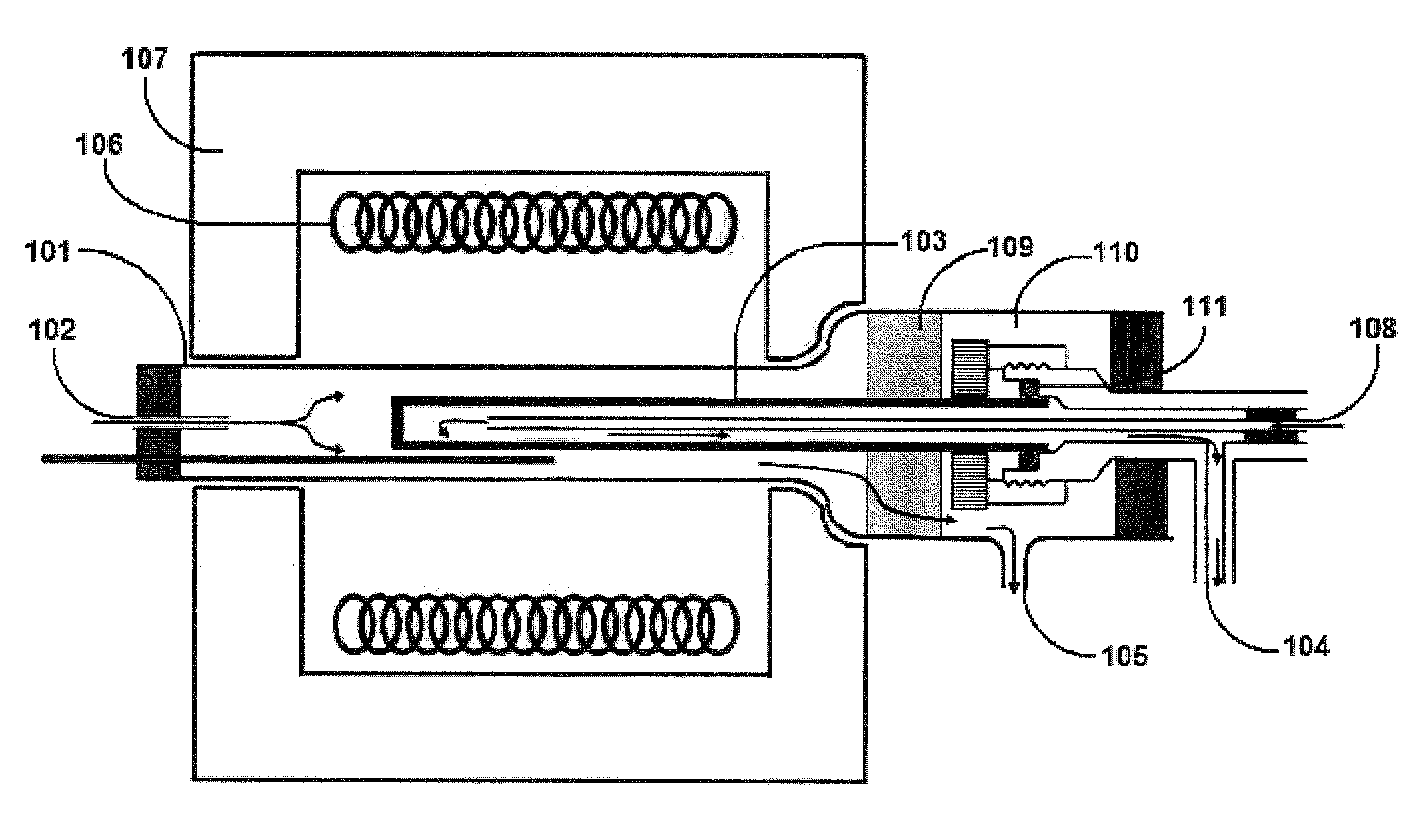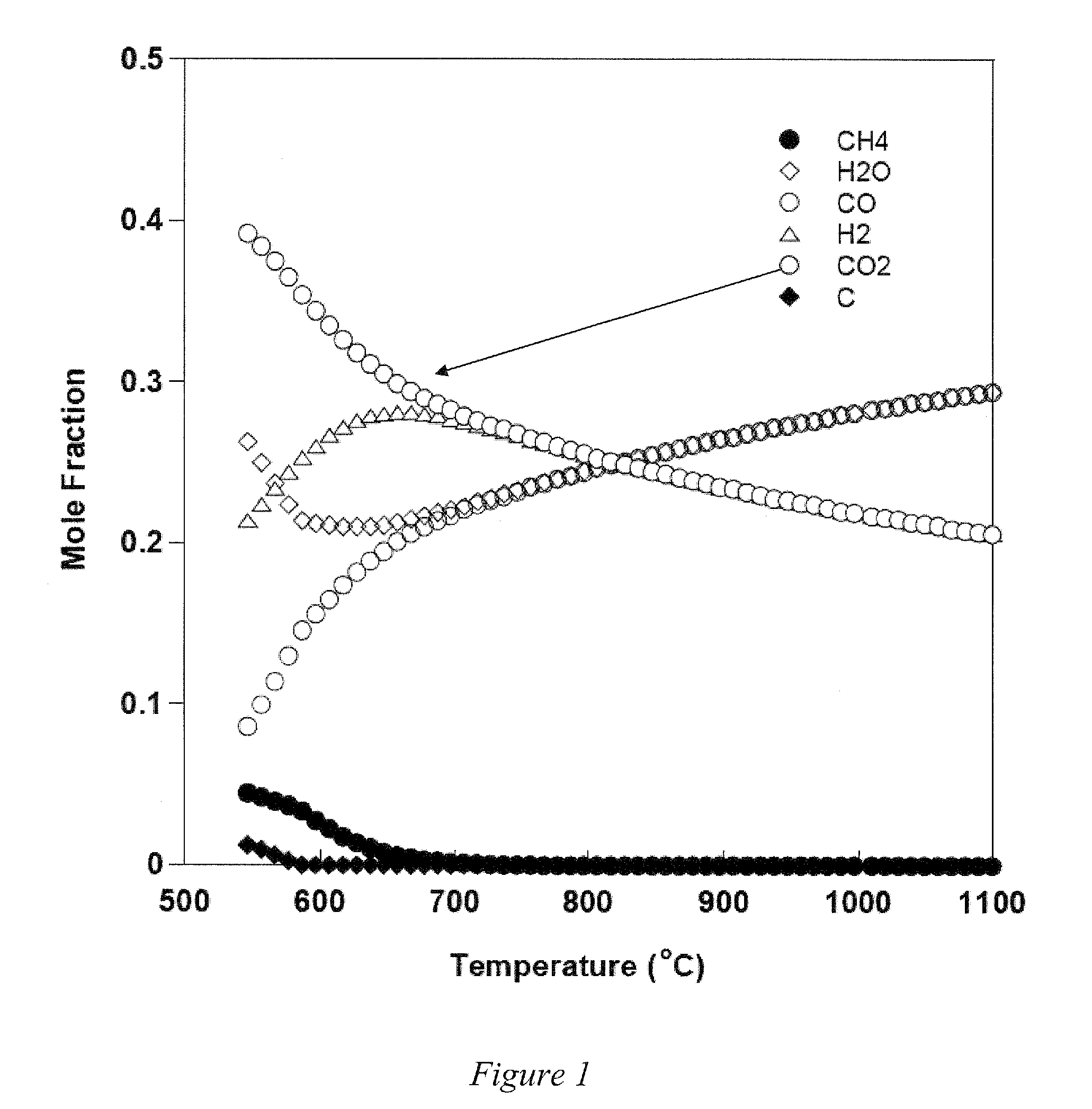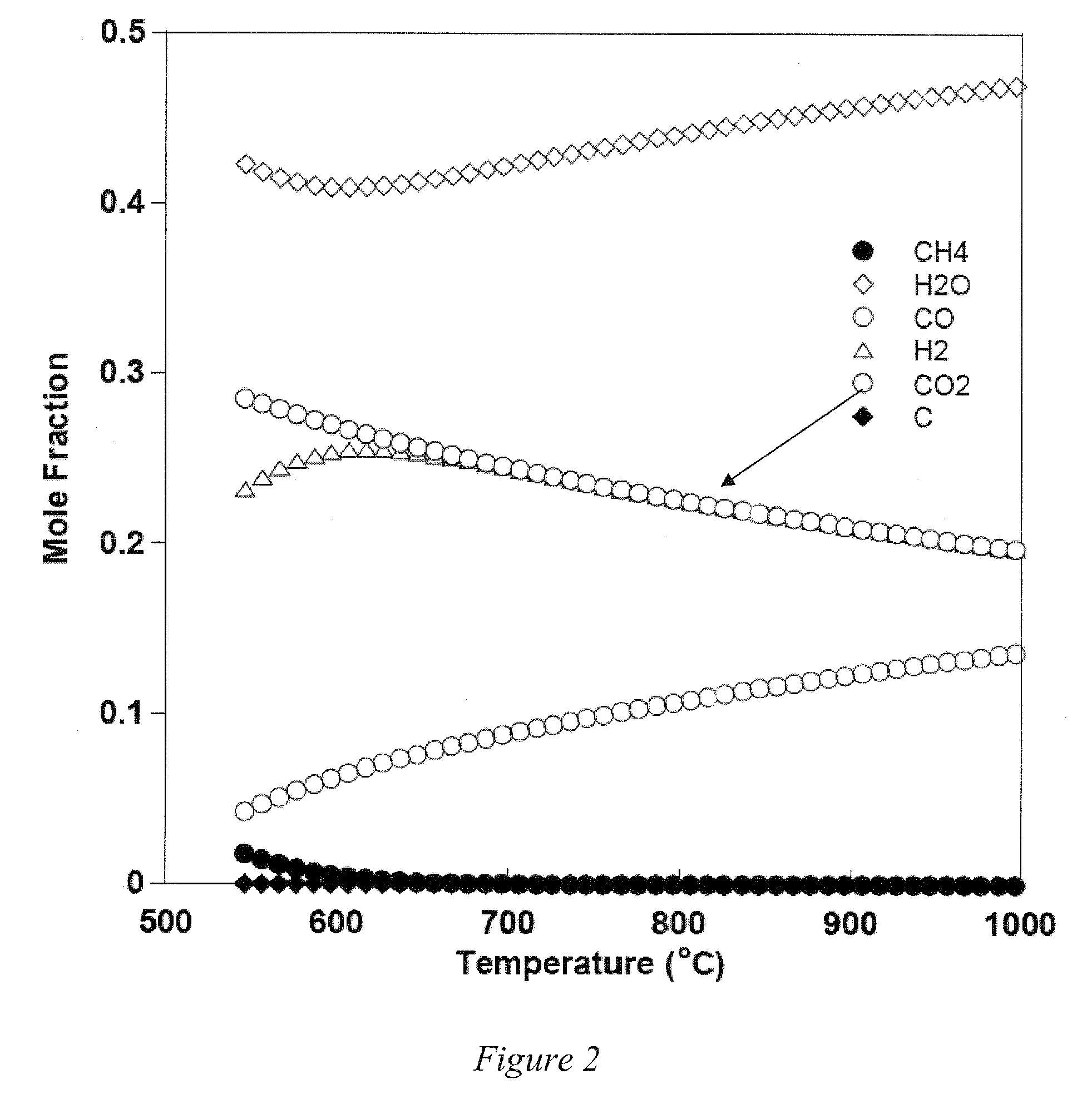Proton conducting membranes for hydrogen production and separation
a technology of conducting membranes and hydrogen, which is applied in the direction of hydrocarbons, chemical/physical processes, climate sustainability, etc., can solve the problems of large area for adequate flux, high cost of membranes, and insufficient chemical stability of systems for many commercial applications, so as to achieve superior stability and improve hydrogen permeation
- Summary
- Abstract
- Description
- Claims
- Application Information
AI Technical Summary
Benefits of technology
Problems solved by technology
Method used
Image
Examples
Embodiment Construction
[0043]Embodiments of the invention are directed to Perovskite-type oxide proton conductors that are stable and can be readily fabricated as part of membranes in a form that can be used in a thermally integrated reactor where hydrogen production and separation can be carried out simultaneously at a high temperature. The novel reactor can be use to carry out hydrogen production from hydrocarbon or hydrocarbon mixture, such as CNG, or other hydrocarbons, including natural gas, coal based syngas and gasified biomass, by SMR and / or WGS reactions carried out simultaneously. In another embodiment of the invention, the membrane reactor can be used to sequestor CO2 by conversion to chemical feedstocks and fuels. The novel Perovskite-type oxide is one of an ABO3-d type where: A is Sr, Ba, Ca, Mg, Sm, Eu, Gd, Tb, Dy, Ho, Er, Tm, Yb or combinations thereof, for example Sr, Ba, Ca, Mg or combinations thereof; and B is Ce1-x-yZrxMy where M is at least one of Ti, V, Cr, Mn, Fe, Co, Ni, Cu, Nb, Mo,...
PUM
| Property | Measurement | Unit |
|---|---|---|
| thickness | aaaaa | aaaaa |
| thick | aaaaa | aaaaa |
| thick | aaaaa | aaaaa |
Abstract
Description
Claims
Application Information
 Login to View More
Login to View More - R&D
- Intellectual Property
- Life Sciences
- Materials
- Tech Scout
- Unparalleled Data Quality
- Higher Quality Content
- 60% Fewer Hallucinations
Browse by: Latest US Patents, China's latest patents, Technical Efficacy Thesaurus, Application Domain, Technology Topic, Popular Technical Reports.
© 2025 PatSnap. All rights reserved.Legal|Privacy policy|Modern Slavery Act Transparency Statement|Sitemap|About US| Contact US: help@patsnap.com



